
Image Credit: http://inhabitat.com/france-publicly-crushes-over-3-tons-of-illegal-ivory-in-stand-against-elephant-poaching/
Ivory, the very word conjures up images of white beauty, delicate carvings, ancient trade and traditions. Ivory has been prized since ancient times in practically every culture for its intrinsic value and for the artefacts created from it. Some of the world’s most beautiful antiquities have been made out of ivory and even today the material is in great demand.
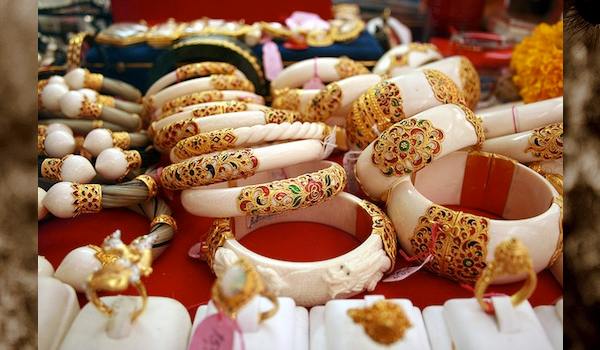
Ivory has been used for both manufacturing and art since time immemorial. In terms of art, ivory has been used to make sculptures, carvings, images of gods and goddesses, pipe stems, seals, weaponry, jewelry and even piano keys. Before the advent of plastic, ivory was the go-to material for many manufacturers. Nowadays, however, ivory is mostly used to create jewelry. It is no surprise, therefore, that the tradition of ivory jewelry in India may have pre-dated the Vedas. India has a long, colourful and varied relationship with jewelry and ivory is a substance that has been highly regarded for literally ages. As such, ivory jewelry has assumed an iconic place in Indian jewelry.

Image Credit: http://www.utsavpedia.com/attires/jewelry/ivory-jewelry-boxes-elegantly-designed-caskets//
What is ivory?
Opinions vary but one thing everyone agrees upon is that the tusks of elephants – both Indian and African – are definitely ivory. Some argue that this is really the only ivory. Others call the tusks of walruses, hippos and narwhals ivory as well. Ivory consists of a tissue similar to bone called dentine. Since this material is the same in all mammals, it is safe to say that ivory from sources other than elephants is still ivory.
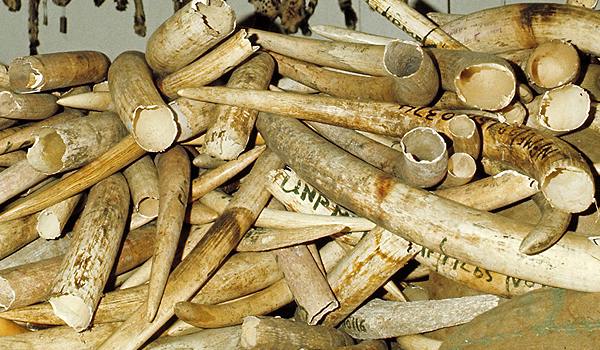
Where Did It Originate From?
The presence of elephants in the Asian and African continents led to wide-spread usage of ivory in these regions which spread to other parts of the world as well. There is no one place that can be pin-pointed as the origin of ivory jewelry. The carving of ivory into ornaments predates even gold and other such jewelry.
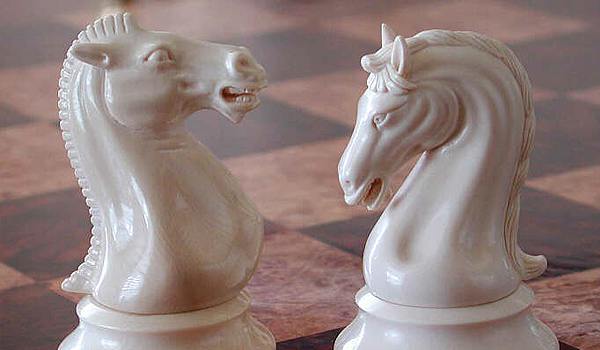
Image Credit: http://www.occupyforanimals.net/ivory-trade.html
In India, ivory is mentioned in the Vedas and there have been many pieces down the ages depicting religious icons – Hindu and otherwise. It has been carved into boxes, statues, necklaces, bangles and so on.
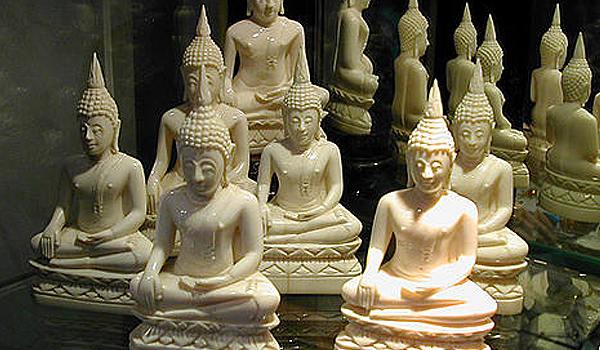
How Is It Made?
Ivory is a soft substance but not as tractable as gold. This limits its uses in terms of jewelry and it can only be used for a few types of ornaments.

Image Credit: http://www.dailymail.co.uk/news/article-2172864/ONE-TON-black-market-ivory-worth-2MILLION-harvested-slaughtered-elephants-seized-New-York-City.html
Since tusks are soft, it can be and is shaved down to produce the resplendent ivory underneath the slightly murky exterior. Once this is done, depending upon what item of jewelry is to be crafted, the tusks are dealt with differently. To make pendants and necklaces, craftsmen shave the tusk and then cut it into thick rings that are then carved into the aforementioned ornaments. To make the traditional bangles that Indian women require, the tusk is first divided into four parts. It is then further divided into parts of different dimensions, depending upon the type of bangle required. Once the ornament is made, the designs are carved into it. The ornaments can even be covered in gold and silver or painted in different colours.
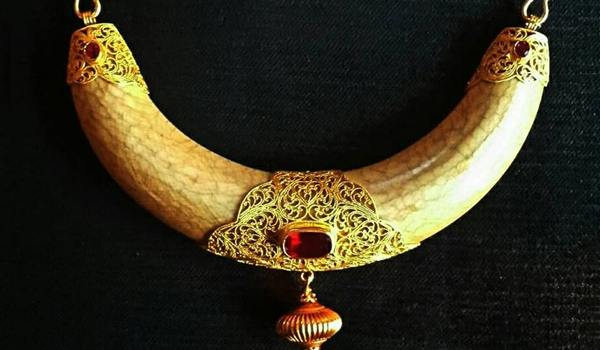
Tradition of Ivory Jewelry in India
Ivory bangles hold a very special place in Indian traditions. In Rajasthan and Gujarat, ivory bangles have to be given as a gift to new brides. In certain communities in Gujarat, the sat phere or seven vows cannot be held if there is no ivory bangle. In Rajasthan of course, one finds married women wearing bangles from shoulder to elbow, although this is a custom that has recently fallen into disuse in the urban centers.

Image Credit: http://eluxemagazine.com/magazine/the-ethics-of-ivory/
The chooda of the Sikh and the Punjabi Hindu wedding is also traditionally supposed to have one ivory bangle and 21 red ones in sets of four. Traditionally the bride is supposed to wear this chooda for the first year of her wedding but changing times have brought this particular deadline down to a month. The chooda in fact has now become so popular that brides from all traditions want to wear it. These days however, the ivory bangle in the chooda is being replaced by glass and plastic.
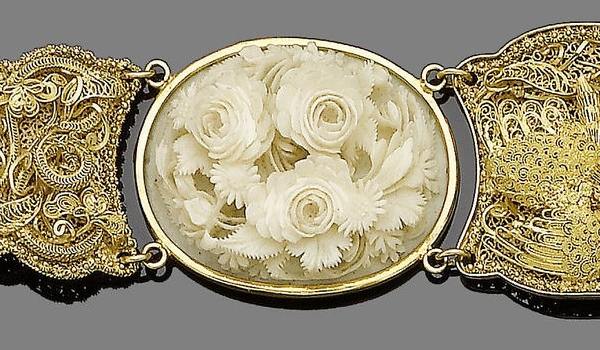
In modern India, across college campuses ivory jewelry has become a rage. Its classic simplicity and elegance mean that it can be paired with any outfit – casual or formal, desi or western. Since it is not as expensive as gold, it is also more affordable for the perpetually broke student fraternity.
How to Determine Ivory from Bone
Many unscrupulous jewellers may try to swindle buyers by pawning of ornaments made of bone while charging for ivory. Here are a few simple ways to determine whether you are being cheated or not.
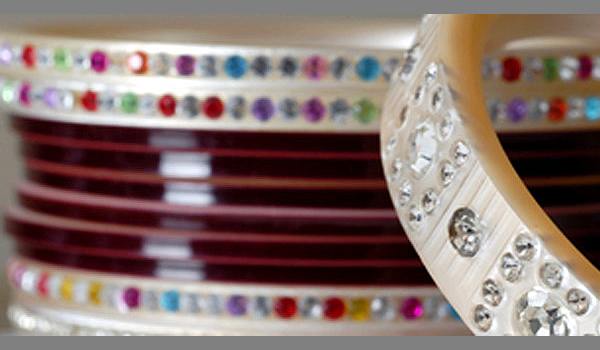
Image Credit: http://www.utsavpedia.com/cultural-connections/chooda-choodi-or-bangles-burrowing-the-wrist-impact/
- Weight – Ivory can be fairly dense and heavy, so one way to test it is to hold it in the palm of your hand. If it feels lightweight it’s definitely not ivory. But be careful as bone too can be dense and heavy
- Texture – Ivory feels smooth to the touch. Therefore, if the surface feels rough or dimpled, it isn’t ivory
- Hot Pin Test – Take a pin and hold it over a flame till it is hot. Then hold the pin to the material you are testing. If it’s ivory there will be no mark and no burning smell. Bone, however, leaves behind a characteristic burning hair smell
- Professional testing – One of the best things to do is to go to a reputed antique house that deals in ivory and get the item tested
- Lab tests – Nothing beats the forensic test. Hand it over to a lab that can determine whether your item is bone or ivory depending on its cellular structure

Image Credit: http://mountainfolkcraft.com/2012/08/21/ivory-bangles/
The Cruelty of Ivory
Human greed knows no bounds. This has been true throughout the ages that ivory has been in use. It is speculated that the Greek and Roman demand for ivory was responsible for wiping out the North African and Syrian elephants. In recent years, the demand for ivory in Japan – to make hanko or name seals – brought down the African elephant population from 1.3 million to 600,000. This in turn was responsible for tighter laws with regards to the sale of elephant ivory from the African continent.
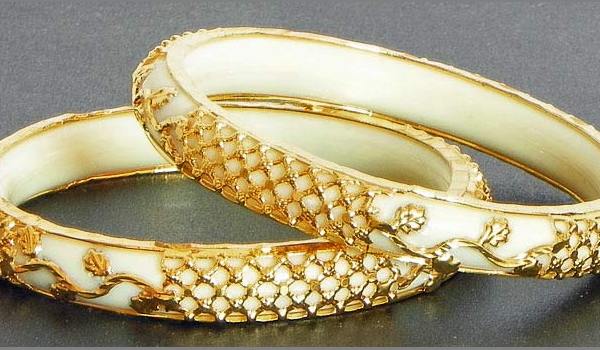
Image Credit: http://techwisesolution.com/venus/details.php?id=67
Closer to home poaching of elephants has brought down the wild elephant population in Asia to a tiny portion of what it was once. Poaching has also ensured that the elephant populations in China, Laos, Vietnam and Indonesia are very close to extinction. In India and Myanmar it has been reported that domestic elephants have been stolen for their ivory.
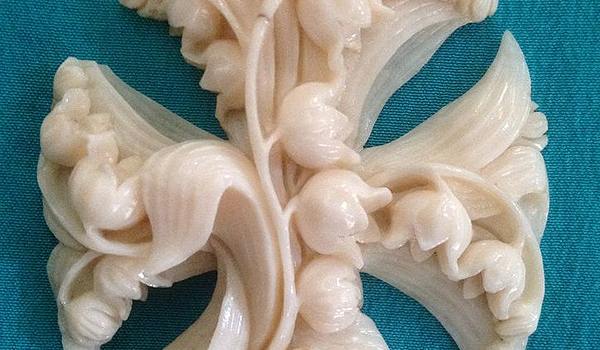
Image Credit: https://www.pinterest.com/pin/395964992213679653/
A direct result of these depredations is that the use of elephant ivory in traditional jewelry has dropped. As mentioned earlier, substitutes such as plastic, glass, bone and tusks and teeth of non-threatened species are now in use. But how long before our demand for more products made out of this precious material leads to more species being on the endangered list?



